‘It’s no fun if you’re scared’: Alex Honnold reflects on his historic free solo climb of El Capitan
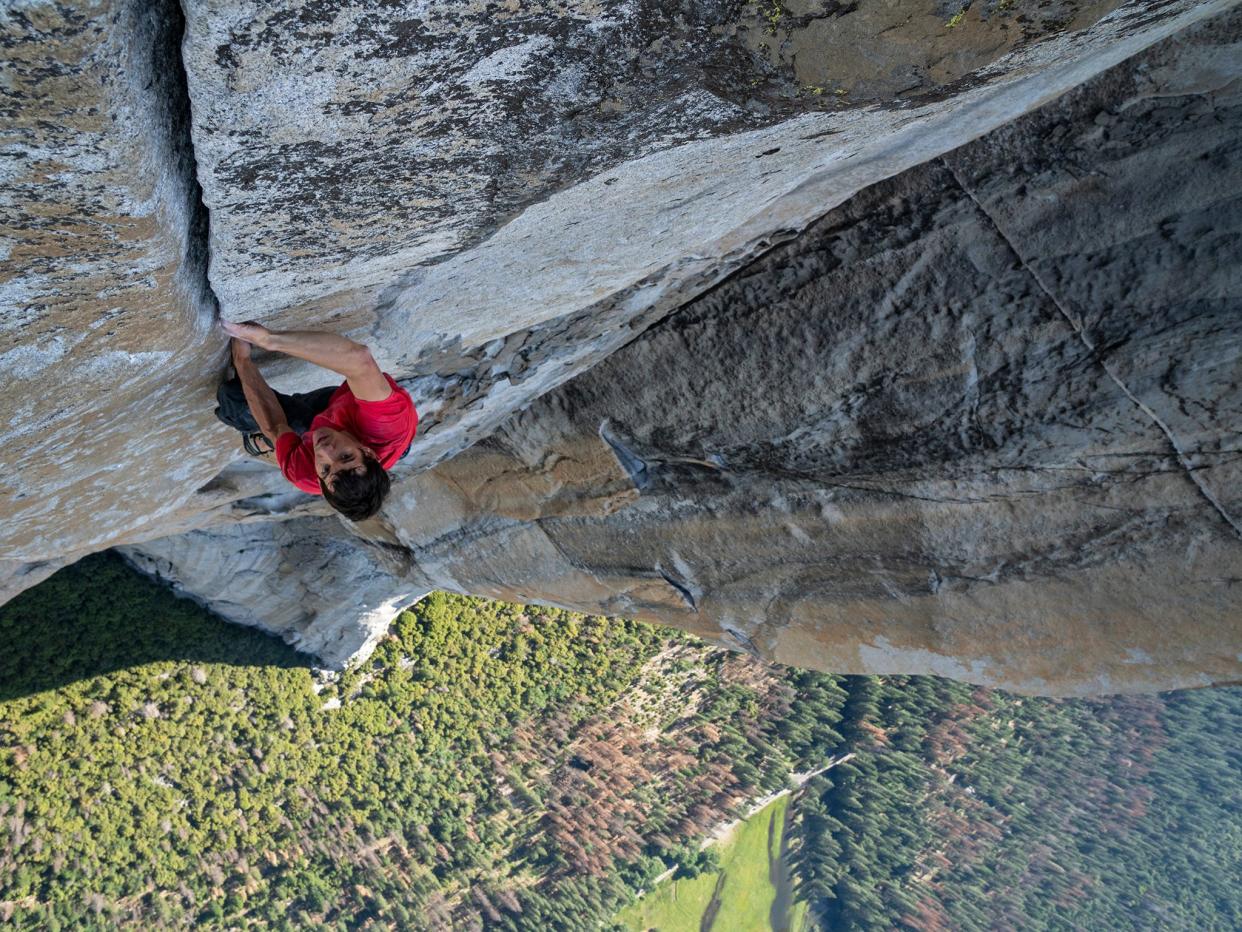
I just love frickin’ climbing,” exclaims Alex Honnold, smiling broadly. Sitting in a hotel room dressed in a baggy black hoodie, walking boots and jogging bottoms, the lean 33-year-old is itching to head out into the chilly London rain and walk to a nearby climbing gym. First, though, we have to talk about Free Solo, which despite sounding like another entry in the interminable Star Wars franchise is in fact an intimate, occasionally hair-raising documentary, showing why Honnold is a man in a class of his own when it comes to climbing rock faces without equipment.
Free solo climbing, or soloing, eschews ropes and all the other paraphernalia one normally associates with safety, and leaves just the climber alone on a wall, with nothing but a pair of rubber-soled rock shoes, and chalk for his or her fingertips. As such, it is climbing in its purest and most dangerous form, where one small slip or moment of distraction can be lethal. It’s like an Olympic sport where if you don’t get gold you die, offers expert climber Tommy Caldwell in the film.
“I think that’s a little hyperbolic,” muses Honnold. But aren’t the stakes so high, you have to be perfect, I ask? “Not perfect, but you have to perform well. It really draws the best out of you. To me, free soloing has definitely always felt like a skills test where you’re like, ‘OK, have I progressed enough as a climber to feel comfortable doing this thing that otherwise could seem impossible?’”
Last year that seemingly impossible thing was becoming the first person to free solo Yosemite’s daunting El Capitan (or El Cap, as its known among climbers). Towering around 914 metres, the imposing granite monolith was first climbed in 1958 by a three-man team using ropes; they took 47 days to reach the summit. Fifty-nine years later, Honnold, tracked by the Free Solo film crew’s cameras, scaled the edifice in three hours and 56 minutes. The feat stunned the climbing world and had people reaching for superlatives.
“I think Peter [Croft, one of Honnold’s climbing heroes] called it the moon landing of free soloing,” says Honnold, laughing. “That’s pretty classic.”
Most people had assumed that if anyone was going to make what was considered the next big leap in free soloing, it would probably be Honnold. He already had a reputation for pushing the limits of what was believed possible, having done, he notes today, “something like 35 or 40 first free solo-type things, of varying degrees”. While reluctant to use the word “groundbreaking”, he says, “A lot of them were important to climbing.”
I want to think about other people’s accidents and to remember what happened to some of my friends, because that’s how you learn
Alex Honnold
He appears comfortable at the cutting edge, but suggests that the only reason many of his solos have been breakthroughs is because he’s in a one-horse race where such big projects are concerned. “There’s nobody else doing it. So it’s easy to be first if you’re the only person playing the game.”
Partly this is because free soloing is extremely dangerous, as it effectively places a climber on a knife edge between life and death. But it may also have something to do with changes in “climbing culture ... [and] where climbing is in general”, suggests Honnold. “I think 25, maybe 30, years ago, free soloing was maybe slightly more common and slightly more accepted. I think that climbing culture as a whole is slightly more risk averse now than it was, say, 40 years ago.”
In Free Solo, his girlfriend, Sanni McCandless, finds his desire to go further hard to understand. In one particularly difficult scene, she begs him to understand why she wants him to stay alive. He tells her he does, but he doesn’t feel obligated to stop. And anyway, he is already doing everything he can to mitigate the risks, he insists. Even so, this feels like cold comfort given the number of free soloers who have ended up dead – a point Caldwell gently but bluntly tries to drive home to his friend.
“I knew a lot of those people and I know the whole stories, the context,” says Honnold. “I’ve known that stuff for many years. So it’s not as if that’s fresh knowledge that suddenly hits me like, ‘Oh that’s hard to deal with!’
“In some ways it’s important to think about those things. I want to think about other people’s accidents and to remember what happened to some of my friends, because that’s how you learn. That’s how you make sure that doesn’t happen to you; or you try your best to make sure that doesn’t happen to you.”
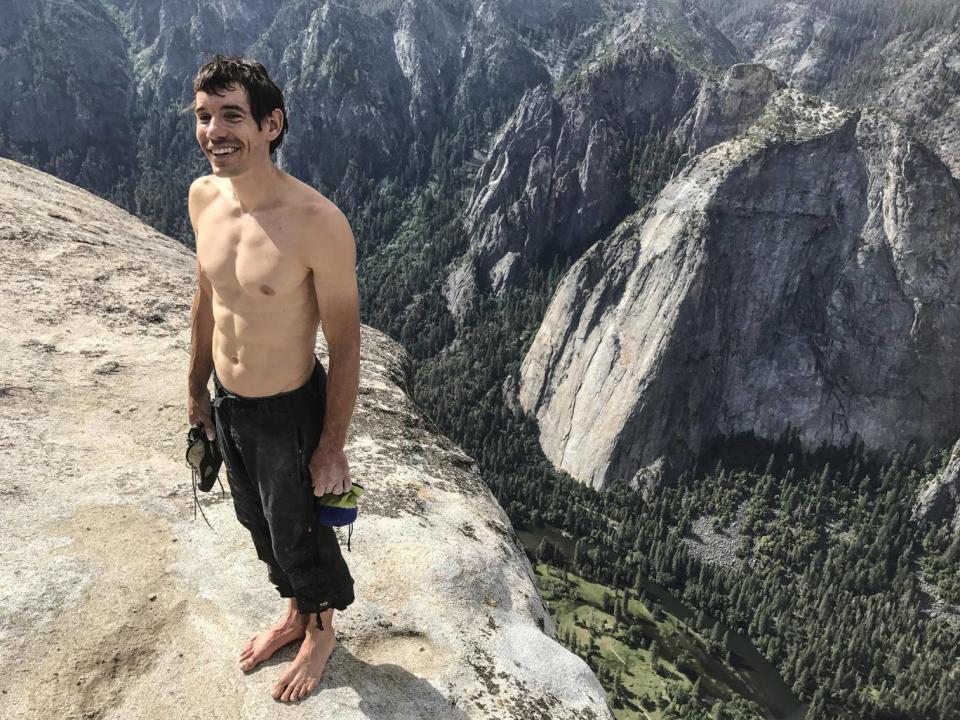
Honnold started climbing regularly in local gyms around the age of 10, but has enjoyed climbing, and looking at the world as a kind of adventure playground, for almost as long as he can remember. He tells me that as a young boy he’d go to services at a Catholic church, near his home in Sacramento, with his mother – until he rebelled and declared himself an atheist – and stare up at the vaulted ceiling and its big exposed beams. He wasn’t contemplating God or Heaven, but “imagining different ways to swing around between the beams and how you could run on that and jump to that. Obviously I never did it, though I did climb the outside as a teenager.”
He also climbed on the roof of his school, and got a kick out of balancing on guard rails.
“I love play structures. Like swinging around on monkey bars. But then I’m often the person running around on top of the monkey bar, jumping from one to the other, just seeing what your body can do and enjoying the feeling of the movement.”
Ultimately, “climbing feels like play”, he says. “I think that is at the heart of my desire to be a climber.” OK, I say, but there is feeling like you are playing, and then there is risking your life climbing walls thousands of feet high, without safety gear. How does the one lead to the other? Honnold smiles.
“I mean, that’s where you take this love of doing a thing, and you combine it with this sort of innate desire to want to improve all the time. To push yourself. When you let that run away from itself for 20 years, you wind up taking on some really, really big challenges.”
My father died in the summer, which took some of the pressure off of going to school. Not that he was overtly forcing me, but it was certainly part of it
Alex Honnold
By the time he went to Berkeley to study civil engineering, at age 19, Honnold was climbing in the gym five days a week, for two to three hours a day. It was a “pretty enthusiastic hobby”, but still not something he thought he could turn into a profession. In the meantime, he drifted on the current of his academic parents’ expectations and disinterestedly continued his education.
“The expectation was to finish university and get a job and just follow the conventional path. But I had never really chosen that particular path. It’s not like I cared about my studies that much.”
His parents had filed for divorce after he graduated from high school (“They weren’t in an overtly bad relationship, but I just don’t think they were that into each other, really”), which became final in May of his freshman year. Two months later, his father, who had taken him to the gym and supported his climbing, suffered a fatal heart attack while running through Phoenix airport. Soon after, Honnold dropped out of Berkeley.
“My father died in the summer, which, to be honest, took some of the pressure off of going to school,” he admits. “Not that he was overtly forcing me to go to university, but it was certainly part of it, which is the expectation that I would.”
Instead of going back to class, he hit the road in the family minivan (his mother had recently inherited a car from her father, who died around the same time as her former spouse), and adopted the frugal lifestyle of a “dirtbag climber” around California. When the minivan broke down irreparably, after a year and a half of touring, he got a bicycle and tent, until he could afford a replacement.
“So it was, like, little steps, where I slowly broadened the scope of my adventures,” he says. “It was just around California and then it was sort of the whole western US, and now obviously it’s all over [the world].”
Today, he has sponsors, but at first he was just living from “month to month, seeking out the next adventure or challenge”. The concept of climbing for a living didn’t really exist at the time, so Honnold thought he would eventually “wind up in some peripheral industry, like guiding”.
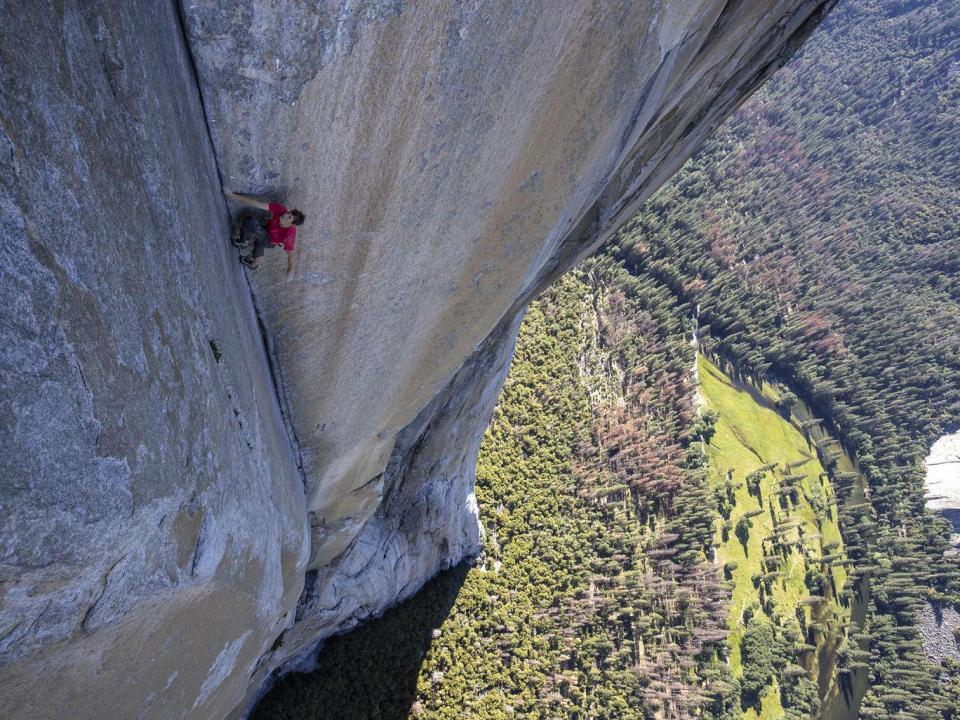
However, when he became the first to free solo the Regular Northwest Face route of another awe-inspiring peak in Yosemite, the 610-metre Half Dome, in 2008, the climb caught the attention of documentary makers who asked him to re-enact sections of the ascent, as well as parts of his solo of the 370m Moonlight Buttress in Utah’s Zion national park, five months earlier, for a short film. This would be the first time that anyone had seen or got a feel for what Honnold went through doing the climbs, because neither had been witnessed by anyone.
“One of the things I really love about climbing is that people will take you at your word for the most outlandish climb,” he says. “You know, ‘Oh, I free-soloed Half Dome today.’ There is basically no evidence of me free-soloing Half Dome. Nobody saw it. I think I told a friend, ‘OK, I’m going back up tomorrow.’ And then I texted him when I was done or whatever.” This level of trust among climbers demands “scrupulous honesty”, so when I jokingly ask why he didn’t cheat and use some nearby equipment to get himself out of a potentially life-threatening situation during the Half Dome solo, because nobody would have known, he is suddenly, and understandably, lost for words.
The result of the film shoot, Alone on the Wall, according to his 2015 memoir of the same name, did more than anything else (including a feature in Outside magazine and a breathtaking National Geographic cover photograph) to spread Honnold’s achievements to an audience beyond the “insular world of hardcore climbing”.
After Half Dome, El Cap was “the next obvious step. But it was just such a big step, it took many, many more years until it seemed even remotely possible.”
I’d learned that I wanted to have a positive experience up there. I didn’t want to feel like I was about to die
Alex Honnold
One of Honnold’s strengths is his ability to seemingly override his fear. In Free Solo, an MRI scan of his brain reveals that his amygdala, which initiates the automatic part of the fight or flight response, requires more stimulus than most people’s. This isn’t to say he doesn’t get scared though. When he was on Half Dome, in the previously mentioned hairy predicament he describes as “outrageous”, he certainly felt fear.
By the time the climber had El Cap in his sights, he says: “I’d learned that I wanted to have a positive experience up there. I didn’t want to feel like I was about to die the whole time.
“I mean, it’s not fun if you’re scared. And I climb for myself. I climb for fun. So if it’s really scary, there’s no real point in being up there.”
To get himself where he wanted to be, Honnold reckons he did around a dozen other big free solos in Yosemite. None were as prestigious as Half Dome, but they were “steps in the right direction. They were so challenging in different ways, and bigger, harder, in some way or another.” Finally, in 2015, he was doing a roped climb on El Cap, and for “whatever reason”, he suddenly thought, “This could maybe be possible.”
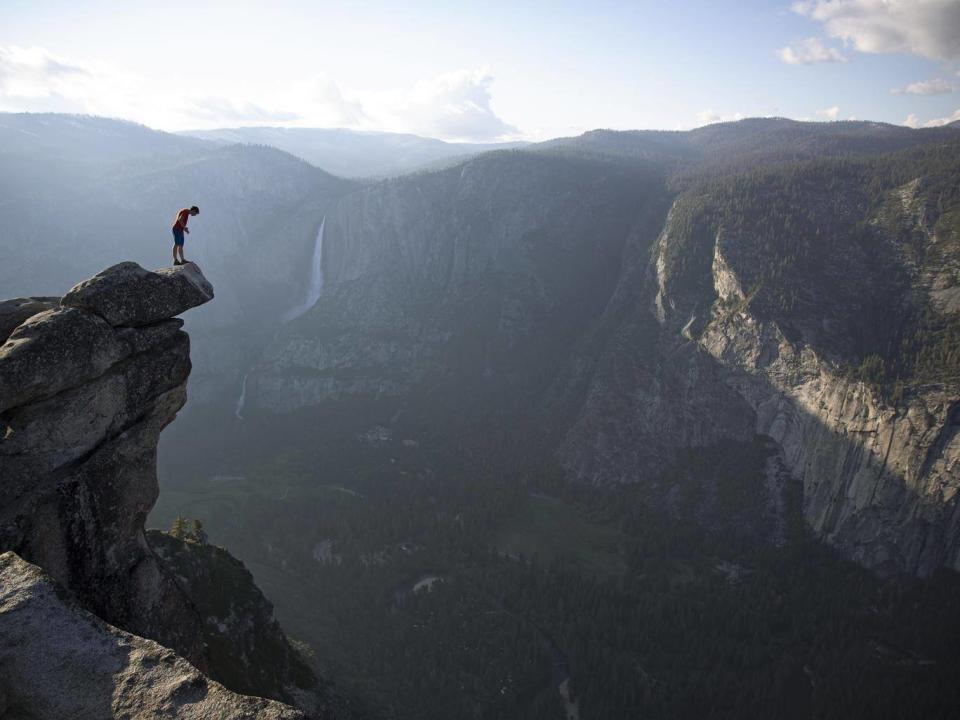
He chose a route and started to break it down into sections, or pitches, logging the features of each in a journal. In his mind, he distinguishes between risk and consequence. The latter is a constant (if he falls, he dies) that he has no control over. The former, however, is a variable that he attempts to minimise through research, rehearsal (on ropes), intense focus, and visualisation. Thus, he noted and memorised every foothold and handhold of the most difficult sections, meticulously choreographing the movements, which he still remembers, he would use to get through them. For example, to essay a pitch known as the “boulder problem”, he elected to use a karate kick-like move, rather than try to leap and catch hold of a piece of wall.
He was particularly concerned about a section of granite which while not very long, and easily overcome using a four-move sequence on a rope, was “super slippery”, and therefore highly dangerous in the context of what Honnold was trying to do.
“You basically had to put your foot on this, like, ball of glass, and just hope that it stuck, because if it slipped, you’d die,” he says.
“There just wasn’t really an adequate way to free solo it. So I pioneered this whole variation that went around that move in a 10-metre circle.”
Having a film team shooting the climb added another element of potential danger. I bring up the story of Henry Barber, who almost died when he was distracted by a cameraman while being filmed free soloing on cliffs in Britain, and Honnold tells me about Peter Croft almost getting knocked off a wall by a cameraman – “which would be a kind of horrendous way to fall to your death”, he laughs.
“The thing about it is the cameramen are hanging off ropes, so if they swing off at the side to get a good angle, it means that they’re loaded on this rope like a pendulum and if they come unclipped from whatever they’re in, they’re going to come swinging across the wall and potentially floss you off with the rope.
“So those were exactly the kinds of things that the whole crew was super-mindful of on the Free Solo filming, because they didn’t want to cause an accident.”
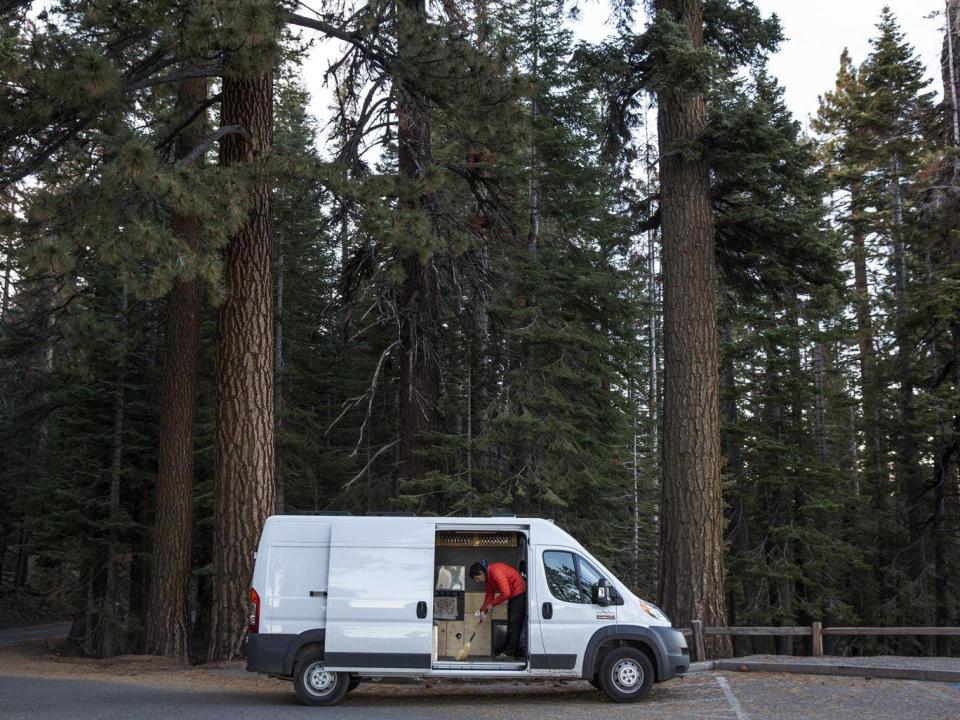
While training, Honnold slipped and severely sprained an ankle. It still wasn’t completely back to full strength when he tried to free solo El Cap for the first time in 2016, and he aborted the attempt mid-climb. He knew the game was up when he reached a point where “you have to trust your life to this one right foothold, and you’re just palming the wall. I can still visualise it,” he says, miming the movements.
“My foot was swollen and it was dark, it was cold, I couldn’t feel my toes. I couldn’t really tell if my toes were exactly on the foothold. You know, I was going to trust my life to this little edge that I couldn’t feel, so I just immediately started cheating.”
Failing was “pretty disheartening and pretty depressing”, but soon he came to see the fact he had been able to “walk up the base of El Cap and start climbing” as a “big victory”. As he’d written in his book, just getting off the ground was going to be a challenge for anyone who attempted to solo the wall. “So even that felt like this huge milestone in some ways.”
He was left feeling “quite a bit hungrier”, and went to Las Vegas to live, train and recover. He returned to Yosemite in the spring of last year, and on Saturday 3 June, almost two years after he’d begun his preparations, achieved what he’d set out to do – the highlights of which are captured in beautiful, breathtaking, vertigo-inducing detail in Free Solo.
After dreaming about soloing the wall for so long, I wonder if actually doing it had left a big El Cap-sized hole in Honnold’s life. “So far not so much,” he says. “Partly because there’s so many other climbing challenges I’m working on.”
The week after his El Cap solo, he went to Alaska to prepare for an expedition to Antarctica. Now, while he is doing press for the film, he is back in the climbing gym, and “getting back to my roots, a little bit”.
He has to be careful where he goes, though. In LA, recently, he was mobbed at a gym by fans, who turned what was meant to be a relaxing workout in between getting off a flight and giving a presentation in the evening, into a full-on, meet-and-greet-type experience. “I was like, to myself: ‘This is definitely not a relaxing, fun way to stretch after my flight. This is crazy! There’s way too many people!’ It is stressing me out just thinking about it,” he says, and I can hear his voice quavering.
Still, he can handle it a lot better than the “shy, dorky loner” he was as a kid. Then, it would have been “like my worst nightmare”, he confesses. “Can you imagine? You’re too shy to talk to anybody and then you have to basically do public speaking every single night, and interviews and things.”
Free Solo is going to bring Honnold to an even wider audience, and could even take him and the film’s team, headed by co-directors Jimmy Chin and Elizabeth Chai Vasarhelyi, to the Oscars. The film is an incredible record of an amazing feat, and will forever be a testament to the climber’s dedication and death-defying athleticism.
“I can’t wait to show my kids and grandchildren some day,” enthuses Honnold, who says he’d like to have a family. “I mean, imagine me as an 85-year-old showing my grandchild: ‘Look what he used to be able to do! That’s cool!’”
National Geographic Documentary Film's "Free Solo" is released in cinemas on 14 December

 Yahoo News
Yahoo News 
